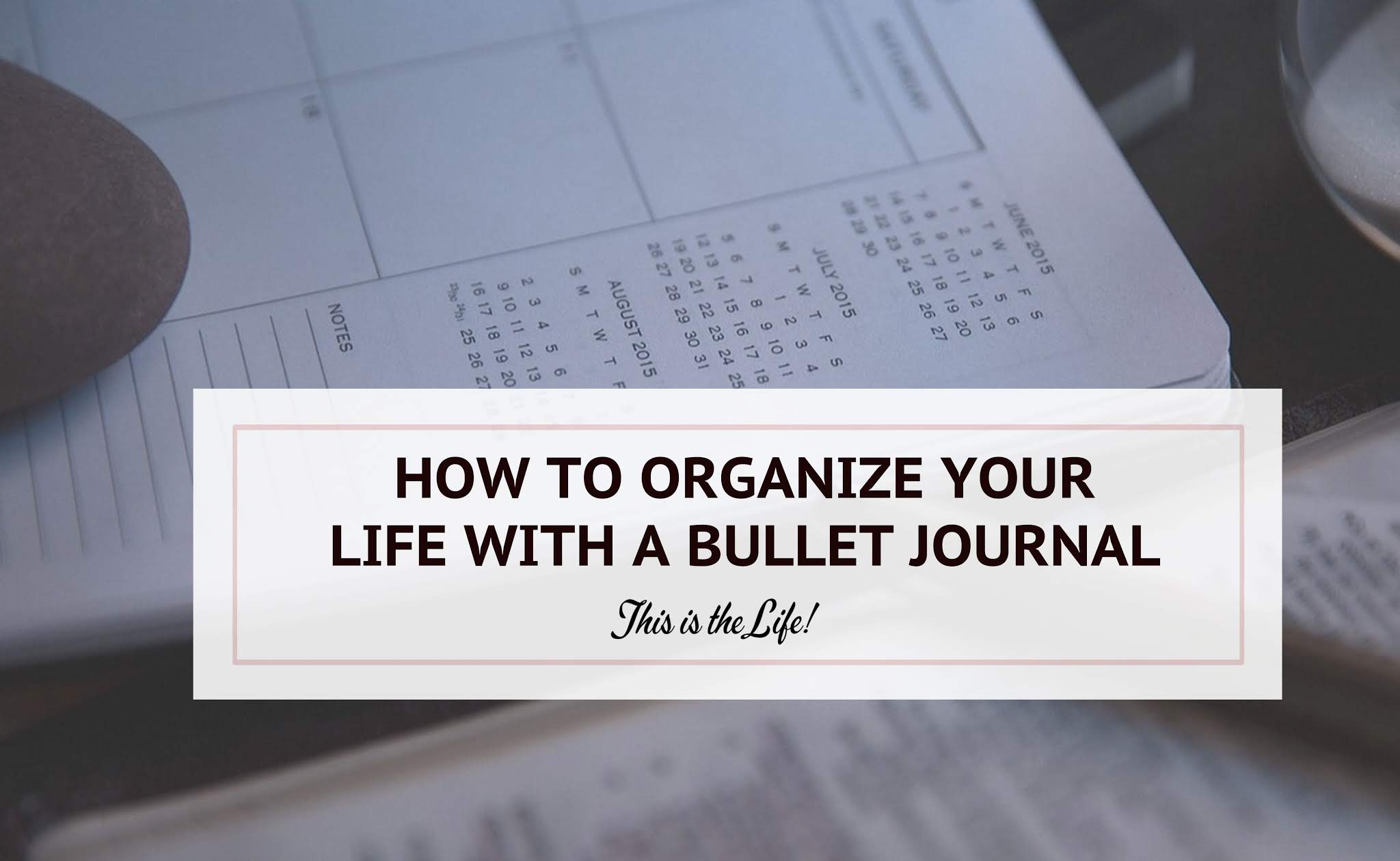How to organize your life with a bullet journal
March 02, 2016If you've heard all the hype about bullet journals and don't know what it is, how it can help you or how you can try it for yourself, this post is for you.
A bullet journal is a customized notebook, which can be used as a productivity tool - a planner for your tasks and to-do lists - and/or as a journal, where you record your life, your ideas, your goals, etc.
Why use a bullet journal?
Most people have always used a planner. However, it doesn't always fit their organization needs because you have to write down your tasks and to-do lists as if on a schedule, since the writing space in a planner is divided into the different hours of the day.
A bullet journal is a freer option to make daily to-do lists, so that you won't forget any tasks you have to complete and it is flexible enough to allow you to easily postpone it to another day.
So, how do you set up a bullet journal for yourself?
Basically, you pick up any blank notebook you have at home and you're ready to go!
Think about things that you usually need to write down (go on, go get those 10 post-its you know you have inside your bag!) and try to list the sections that you might need and like to have if you were able to make your own planner.
The bullet journal's setup is meant to be created by each person and according to their own needs. But, to give you a better idea of how you can organize your bullet journal,
A bullet journal is usually mostly comprised of daily to-do lists, but you can also have a few spaces for other purposes.
- The very first page of your bullet journal should be an index (you should, therefore, number your notebook pages - it makes it easier to find the different sections in your journal).
- You could have a section with goals/resolutions for the year.
A bullet journal can be an amazing instrument towards your goals of self-improvement and this particular section will help you remind yoursel of your goals and to keep working on them.
- You can organize your bullet journal into calendar-like sections:
- You can have a yearly view.
To do this, just make 12 boxes for each month of the year, where you can write any event that will take place during that month or any tasks you have to schedule to complete on that month.
- After that, you can have a monthly/weekly planner, which is a month view divided into 4 boxes for each week of the month. It's basically the same logic as before, but it allows you to write down the things you have to get done on a certain week.
- Then, you should have your daily calendar, where you can write your to-do lists every day. This part doesn't have any boxes, it's much freer.
After this part, you should leave almost the rest of the journal blank, as you'll need it to write daily to-do lists for these 365/6 days!

If you want to add little sections for any goals or notes you want to make, you can put those at the end of the journal, so as to leave the middle pages free for the daily journaling.
So, starting from the end of the journal, you could have a few more sections such as:
- A wish list, where you list all the things you've been eyeing or wishing to buy (or get as a present!)
- A list of books you read during the year, where you can list the title of a book each time you finish it.
- A list of movies watched during the year
- A list of museums/places visited on that year
This could be a way to enjoy the weekends by doing some cultural plans - check out our post on how to be a tourist in your own city.
- A savings plan
If you have a money goal you want to reach you can draw a ladder with various amounts until you reach your goal. As you save more, you just cross out or fill in the amount in each ladder. It's a fun way to view your savings' effort!
- A week schedule - you can draw your weekly schedule (like a class schedule but with the 7 days of the week on it) and then you can just fill in your class times and other activities or chores/tasks you have planned in a sort of fixed way every week. This way you can organize your time a little better.
- A fitness log
Divide the page into 12 boxes referring to each month of the year and every time you work out, you draw a square in the box corresponding to the month you're in. That way, you can see how committed you've been during that month and really visualize the number of workouts you've gotten in. It's another fun section to fill in.
- A travel journal
Save a few pages to write down what you do on your trips if you go somewhere. That way you won't forget what you visited and what you did on each day. This can also be really helpful if you want to write travel journals later on.
- A finances section
Here, you can log your spending budget for the month and list everything you've spent money on so that you know if you're overspending and where to cut down. It also helps visualize my fixed costs for every month to know what your spending budget is.
These last sections seem like a lot, but they only take up about a page each (only the travel journal is a little longer).
Another thing you should know about bullet journals is that there is a key in which you can easily signal the tasks you completed, that you didn't complete and have to migrate to the next day or even make an important task stand out from the rest. All of this makes for flexible and quick journaling.
You can read more about the key for bullet journaling on the bullet journal website (note that you can also customize this according to your own preferences).
The bullet journaling experience:
Bullet journaling can be a very effective productivity tool. It's very flexible and you can easily jot down everything you've been meaning to do, even if the subjects aren't related. You can write anything you want, be it homework or shopping lists, it's your own journal.
It's also very easy to migrate tasks to another day, and you will never forget anything or do it at the last minute.
With the bullet journal, you can just write a task down the day you think about it and then, if you don't complete it right away, just draw the migrate signal on the task and copy it down on the next day's to-do list if needed.
Finally, it can really help with your goals, be it with productivity or remembering to find the time to do the things you enjoy.
Over to you!
Do you use a bullet journal? How's it working out for you? And what's your setup?







0 comment(s)